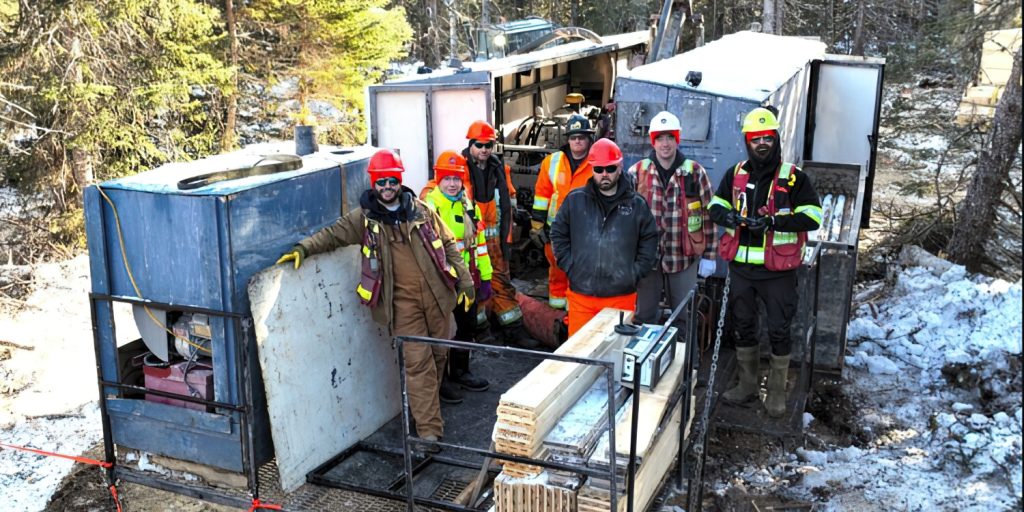Exploits Discovery drills 9.84 g/t gold over 12 metres at Bullseye, Newfoundland

Exploits Discovery Corp. [NFLD-CSE; NFLDF-OTCQX; 634-FSE] reported assay results from eight recent exploration drill holes at its Bullseye property, Newfoundland. Several grains of visible gold were observed within a network of quartz veins in drill hole BE-23-014, located approximately 250 metres north of New Found Gold’s recently publicized, high-grade intercepts at the Everest gold zone.
Highlights: BE-23-014 averaged 9.84 g/t gold over 12.00 metres core length, located at a vertical depth of approximately 133 metres below surface, where 10 grains of visible gold were noted within a network of quartz veins, including 36.75 g/t gold contribution from a 0.45-metre sample, including 26.98 g/t gold contribution from a 1.15-meytre sample, including 27.48 g/t gold contribution from a 0.70-metre sample;, including 19.22 g/t gold contribution from a 1.10-metre sample, including 15.97 g/t gold contribution from a 0.65-metre sample.
BE-23-007 intersected 4.35 g/t gold over 0.55 metres core length, located at a vertical depth of approximately 50 metres below surface, and 3.60 g/t gold over 0.40 metres core length located at a vertical depth of approximately 80 metres below surface.
Assay results from 14 of 26 drill holes have been received to date. A total of 9,536 metres has been drilled to date in 26 holes within the northeastern trend of the Appleton Fault and prospective splay structures.
All of Exploits’ claim groups within the Appleton and Dog Bay sector of central Newfoundland are now fully permitted for conducting exploration activities with forestry access roads and trails that provide safe, rapid, access into most work areas.
The company’s local prospecting team has already started investigating additional surface exposures of sulphide mineralization and quartz veining at Bullseye.
Jeff Swinoga, president and CEO, commented: “We are excited to announce our best assay results since the start of our 2023 Bullseye drilling program. Our talented local team is seeing a broad network of multi-stage quartz veins and related sulphide mineralization commonly associated with the track of the Appleton fault structure. We believe this demonstrates that Bullseye has the potential to replicate or extend the high-grade gold mineralization observed by our neighbours within 250 metres of our claim boundaries.”
To date, a total of 26 holes consisting of 9,536 metres of NQ drilling, has been completed of the results-oriented drill program. This initial drilling is carefully designed and guided on a daily basis to determine the best potential for encountering high grade gold mineralization along the company’s 1.2-km segment of the Appleton Fault zone.
Other assay highlights from recent drilling at Bullseye include BE-23-014 that returned 3.98 g/t gold over 0.40 metres core length located at a vertical depth of approximately 75 metres below surface; 4.71 g/t gold over 2.50 metres core length at a vertical depth of approximately 103 metres below surface, including 12.98 g/t gold over 0.50 metres core length; 7.48 g/t gold over 1.60 metres core length located at a vertical depth of approximately 140 metres below surface, including 11.92 g/t gold over 0.95 metres core length.
Exploits is focused on discovering high-grade structurally hosted epizonal gold similar to New Found Gold’s success along the Appleton Fault zone and parallel structures within the Exploits Subzone.
